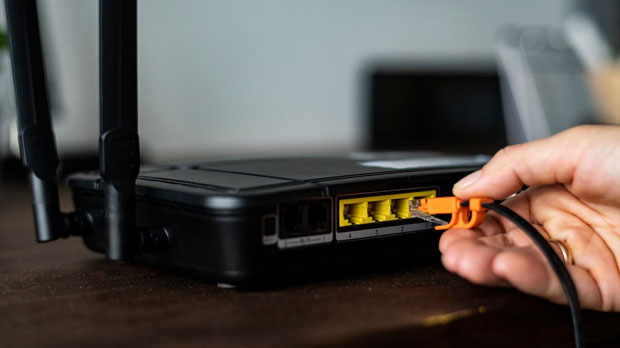A free proxy IP SOCKS5 is a type of proxy server that enables users to connect to the internet anonymously while bypassing geographic restrictions or other network limitations. SOCKS5 (Socket Secure version 5) is a specific protocol designed for proxying internet traffic. It is often preferred due to its flexibility and the enhanced security it offers compared to other types of proxies, such as HTTP proxies. The SOCKS5 protocol allows users to route any type of internet traffic through the proxy, providing a greater level of anonymity and privacy online. In this article, we will delve into the definition of socks5 proxies, their primary functions, advantages, and limitations, to help users understand their value and potential use cases. What is a socks5 proxy?A SOCKS5 proxy is a type of internet protocol that allows users to route their internet traffic through a server, effectively masking their IP address. It works by creating a "tunnel" between the user's device and the destination server, through which the data is sent. Unlike HTTP proxies, which only route specific web traffic, SOCKS5 proxies can handle any type of traffic, including web browsing, email, file sharing, and more. SOCKS5 provides a high level of flexibility, supporting a wide range of protocols and applications. It does not alter the data being transmitted, ensuring that it can work seamlessly with encrypted traffic, such as HTTPS and even peer-to-peer (P2P) connections. Additionally, SOCKS5 proxies are known for offering better performance and fewer restrictions compared to other types of proxies.How Does SOCKS5 Work?The SOCKS5 protocol operates by acting as an intermediary between the user’s device and the server they wish to connect to. When a user requests a connection to a specific website or online service, the socks5 proxy server receives the request, forwards it to the destination server, and then returns the response to the user. This process ensures that the user’s IP address is masked, as the website or service only sees the IP address of the SOCKS5 server rather than the user's own.The protocol supports multiple authentication methods, ensuring that only authorized users can access the proxy service. Furthermore, SOCKS5 does not interfere with the data being transmitted, making it suitable for a wide variety of internet activities.Advantages of Using Free Proxy IP SOCKS51. Enhanced Privacy and Anonymity: One of the primary reasons people use SOCKS5 proxies is to maintain their privacy and anonymity online. By masking the user’s IP address, SOCKS5 proxies prevent websites and online services from tracking the user’s location or browsing habits. This makes it an ideal tool for individuals who want to protect their personal information while using the internet.2. Bypassing Geographic Restrictions: Many websites and online services restrict access based on the user’s geographic location. With a SOCKS5 proxy, users can bypass these restrictions by connecting to servers in different countries, allowing them to access region-locked content. This feature is especially useful for users who want to watch videos, access websites, or use services that are only available in certain countries.3. Support for Multiple Protocols: Unlike traditional HTTP proxies, which only support web traffic, SOCKS5 proxies can handle a variety of protocols, including HTTP, FTP, and even P2P protocols. This makes them suitable for a wide range of activities, from simple web browsing to file sharing and torrenting.4. Improved Security: SOCKS5 proxies offer improved security compared to other proxy protocols. They support strong authentication methods, such as username and password verification, which helps prevent unauthorized access. Furthermore, since SOCKS5 does not alter the data being transmitted, it ensures that encrypted data, such as SSL/TLS connections, remains intact and secure.5. High Performance and Speed: SOCKS5 proxies are generally faster than other types of proxies because they do not modify the traffic. This results in lower latency and better performance, particularly when using services that require real-time data, such as video streaming or online gaming.Limitations of Free Proxy IP SOCKS51. Limited Availability of Free SOCKS5 Proxies: While SOCKS5 proxies offer significant advantages, finding reliable free SOCKS5 proxies can be challenging. Free proxies often come with limitations such as slower speeds, unreliable connections, and limited server locations. Additionally, many free socks5 proxy services may not provide strong security features, putting users' data at risk.2. Potential Security Risks: Although SOCKS5 itself is a secure protocol, free proxy services may not always implement proper security measures. Users may be exposed to risks such as data interception, malware, or even having their traffic logged by the proxy provider. To ensure security, it is important to use SOCKS5 proxies from trusted sources that prioritize privacy.3. Overcrowded Servers: Free proxy servers often experience high traffic volumes, as multiple users may be sharing the same server. This can lead to slower connection speeds, longer loading times, and poor overall performance. In some cases, users may even encounter service outages if the servers become too overloaded.4. Limited Support for High-Bandwidth Activities: While SOCKS5 proxies are generally faster than other types of proxies, they may still struggle to handle high-bandwidth activities such as streaming high-definition videos or large-scale file downloads. Users engaging in such activities may experience buffering or slower download speeds on free SOCKS5 proxies.Common Use Cases for SOCKS5 Proxies1. Privacy Protection: SOCKS5 proxies are widely used for protecting users' privacy when browsing the web. By hiding the user’s IP address, they prevent websites from tracking the user's online activities, helping to avoid targeted advertising, data profiling, and surveillance.2. Bypassing Censorship and Restrictions: In regions with heavy internet censorship, SOCKS5 proxies are often used to access blocked websites and services. This allows users to bypass government restrictions and access the open internet without fear of surveillance or penalties.3. P2P Sharing and Torrenting: SOCKS5 proxies are particularly popular among users who engage in peer-to-peer file sharing or torrenting. They provide a secure and anonymous way to download and upload files, preventing ISPs and third parties from monitoring the user's online activities.4. Web Scraping: Businesses and individuals use SOCKS5 proxies for web scraping, which involves extracting data from websites in large volumes. By rotating between different proxy servers, users can avoid IP bans and ensure that their scraping activities are not detected.5. Online Gaming: SOCKS5 proxies are also used by online gamers to reduce latency and improve connection speeds. By connecting to a server in a geographically closer region, gamers can reduce lag and enhance their overall gaming experience.ConclusionFree Proxy IP SOCKS5 offers several benefits for users looking to maintain privacy, bypass restrictions, and ensure secure internet browsing. While it has its limitations, particularly in terms of speed and reliability when using free services, SOCKS5 remains a powerful tool for users who prioritize security and anonymity. By understanding the functionality, advantages, and limitations of SOCKS5 proxies, users can make informed decisions about whether they are the right choice for their internet activities. For users requiring more reliable and high-performance proxies, investing in premium SOCKS5 proxy services may provide a better overall experience. However, for casual browsing or limited use, free SOCKS5 proxies can still be a valuable resource in ensuring online privacy and security.
Jan 07, 2025
![arrow]()




























































